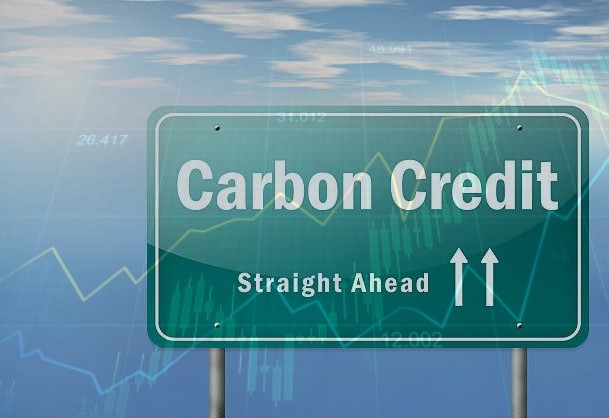The Top 5: Signs That Carbon Markets Are Headed India’s Way

Many big carbon emitters across the globe have opted for carbon emission reduction following the 2015 Paris agreement to limit the global rise in temperature below 2 degrees from pre-industrial levels. The CoP26 last year just encouraged new sets of targets from many nations. India is not an exception in this new tide of change either, with its targets like reducing the total projected carbon emission by one billion tonnes between now and 2030 and becoming carbon neutral and achieving net-zero emissions by 2070. A carbon market is sure to play a big role in achieving the set targets for India.
The countries are pushing for more green policies to curtail emissions. This rendered industrial leaders in following the same wave of change as well. As the world moves towards carbon emission reductions, carbon markets are becoming a major driving wheel for this change worldwide. Several Governments’ policies on carbon-cutting are also responsible for the market value of carbon rising substantially, recently.
In the absence of a carbon price, economic agents do not factor in the social cost of their emissions. Setting a price for carbon emissions has been conceded as an optimal strategy to internalize these costs. Carbon pricing is often done explicitly through specific carbon taxes and carbon markets, and implicitly through indirect taxes, subsidies, etc.
Worldwide, some of the major mechanisms for carbon-cutting include the EU Emission Trading Scheme (EU ETS), the Western Climate Initiative (WCI), Regional Greenhouse Gas Initiative (RGGI), and the U.K. Emission Trading Scheme (U.K. ETS).
Similarly, carbon markets may soon become an integral part of India’s fight against carbon emissions. There are some very clear signs that a carbon market is headed toward India.
#5 Similar Markets in Major Economies
The world is considering carbon markets on international as well as national levels. For instance, a carbon market was already set up under the United Nation’s 1997 Kyoto protocol. Accordingly, the developed countries had targets to reduce their emissions, but developing countries did not. Thus, if a developing country reduced its emissions, it could sell a ‘credit’ to a developed country. Although it didn’t work out, it introduced the system to the world. Carbon markets now already exist within some countries and regions. This includes developing countries in Europe and the American state of California. Moreover, even China, a developing nation and India’s immediate neighbour, has its domestic carbon market.
India won’t be staying behind and has been considering such a system in recent years.
#4 Incentivising MSMEs to Go Green
Carbon market supporters say they are one of the most effective drivers of reducing emissions. They offer low-cost emission reductions. Further, a carbon market helps in pushing innovations for greener options as the companies strive to develop and evolve technologies to bring down the carbon emissions to earn credits and then sell those and earn revenue.
Indian policies have been revolving around MSMEs, recently. A carbon market will spur innovation and finance clean projects from Indian MSMEs, which have huge scope for emission reduction. The involvement of MSMEs in India is crucial if India has to achieve its climate targets. Carbon credits will enhance the positive impacts by incentivising these new MSMEs to go green.
#3 Clarion Call of Atmanirbhar Bharat
In May 2020, the Prime Minister of India raised a clarion call to the nation giving a kick start to the Atmanirbhar Bharat Abhiyaan (Self-reliant India campaign) when the country was grappled with adverse impacts of economic and health crises due to the pandemic. The recent Russia-Ukraine war has only confirmed the urgency of a self-reliant India.
Meeting energy demand through locally produced renewable energy and green hydrogen is one of the ways India plans to achieve self-reliance in energy. A carbon market will play an important role in achieving the vision of self-reliance in the energy sector. The possibility of revenue generation from reducing emissions will encourage more firms to pop up. Hence, the call of Atmanirbharta (self-reliance) is a clear sign that a carbon market is headed toward India.
#2 Paris Agreement and Indian Goals of Carbon Reduction
One important change from the Kyoto protocol of 1997 to the Paris Agreement of 2015 was the nature of carbon credit. While in the former agreement of 1997, it was established that carbon was an internationally tradable commodity and developed countries (except economies in transition or developing economies) were mandated to have carbon markets, Article 6 of the latter agreement allowed countries to voluntarily cooperate to achieve emission reduction targets set out in their Nationally Determined Contributions (NDCs). This means that, under Article 6, a country (or countries) will be able to transfer carbon credits earned from the reduction of GHG emissions to help one or more countries meet climate targets.
India built on the Paris agreement with the then NDCs. Earlier this month, the cabinet approved India’s updated NDCs as well. These will soon be submitted to the United Nations Framework Convention on Climate Change (UNFCCC). Carbon markets can play a very critical role in India’s journey to achieve its net zero and decarbonization goals as well as in catalyzing certain key sectors such as transportation, agriculture, forestry, waste management etc.
Hence, It is only logical to think that the carbon market is headed towards India as the country may soon turn to carbon credits suggested in the same agreement.
#1 Energy Conservation (Amendment) Bill 2022
The Indian Parliament recently passed the Energy Conservation (Amendment) Bill 2022 which modifies the 2001 energy conservation act. One of the most eye-catching provisions of the bill is the one that mentioned the domestic carbon credit trade in the country. The new bill also talks about focusing on domestic carbon credit trade in the country for which the government has announced putting a halt on the export of carbon credit unless its own climate goals are achieved.
The Bill also empowers the government to specify a carbon credit trading scheme as well as issue tradable carbon credit certificates. Further, the government may even authorise any agency to issue these certificates, as per the Bill. This is so far the closest sign and a perfect indication of carbon market for Indian economy. The carbon market is not just headed toward India anymore, it has arrived.




